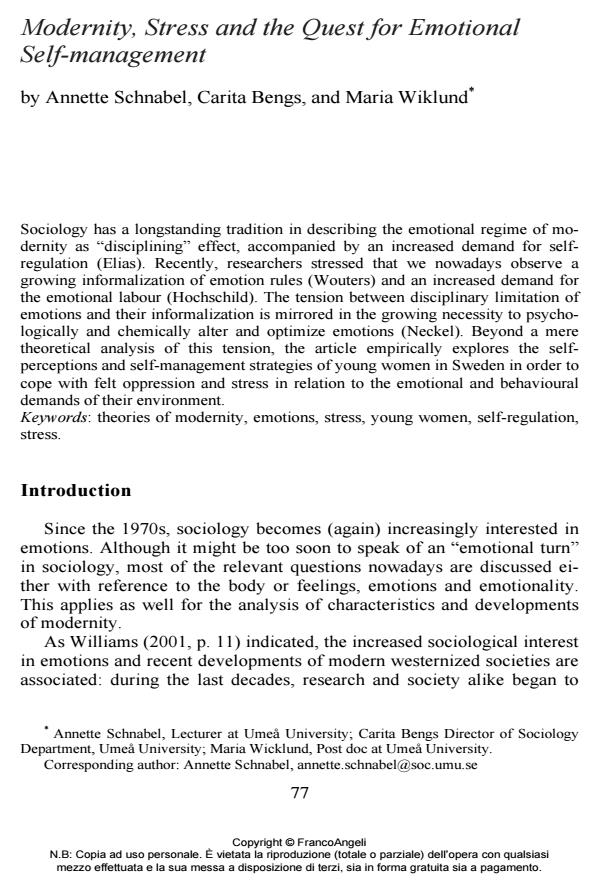Modernity, Stress and the Quest for Emotional Self-management
Titolo Rivista SALUTE E SOCIETÀ
Autori/Curatori Annette Schnabel, Carita Bengs, Maria Wiklund
Anno di pubblicazione 2013 Fascicolo 2012/Suppl. 2EN
Lingua Inglese Numero pagine 17 P. 77-93 Dimensione file 211 KB
DOI 10.3280/SES2012-SU2006EN
Il DOI è il codice a barre della proprietà intellettuale: per saperne di più
clicca qui
Qui sotto puoi vedere in anteprima la prima pagina di questo articolo.
Se questo articolo ti interessa, lo puoi acquistare (e scaricare in formato pdf) seguendo le facili indicazioni per acquistare il download credit. Acquista Download Credits per scaricare questo Articolo in formato PDF

FrancoAngeli è membro della Publishers International Linking Association, Inc (PILA)associazione indipendente e non profit per facilitare (attraverso i servizi tecnologici implementati da CrossRef.org) l’accesso degli studiosi ai contenuti digitali nelle pubblicazioni professionali e scientifiche
Sociology has a longstanding tradition in describing the emotional regime of modernity as "disciplining" effect, accompanied by an increased demand for selfregulation (Elias). Recently, researchers stressed that we nowadays observe a growing informalization of emotion rules (Wouters) and an increased demand for the emotional labour (Hochschild). The tension between disciplinary limitation of emotions and their informalization is mirrored in the growing necessity to psychologically and chemically alter and optimize emotions (Neckel). Beyond a mere theoretical analysis of this tension, the article empirically explores the selfperceptions and self-management strategies of young women in Sweden in order to cope with felt oppression and stress in relation to the emotional and behavioural demands of their environment.
Parole chiave:Theories of modernity, emotions, stress, young women, self-regulation, stress.
Annette Schnabel, Carita Bengs, Maria Wiklund, Modernity, Stress and the Quest for Emotional Self-management in "SALUTE E SOCIETÀ" Suppl. 2EN/2012, pp 77-93, DOI: 10.3280/SES2012-SU2006EN